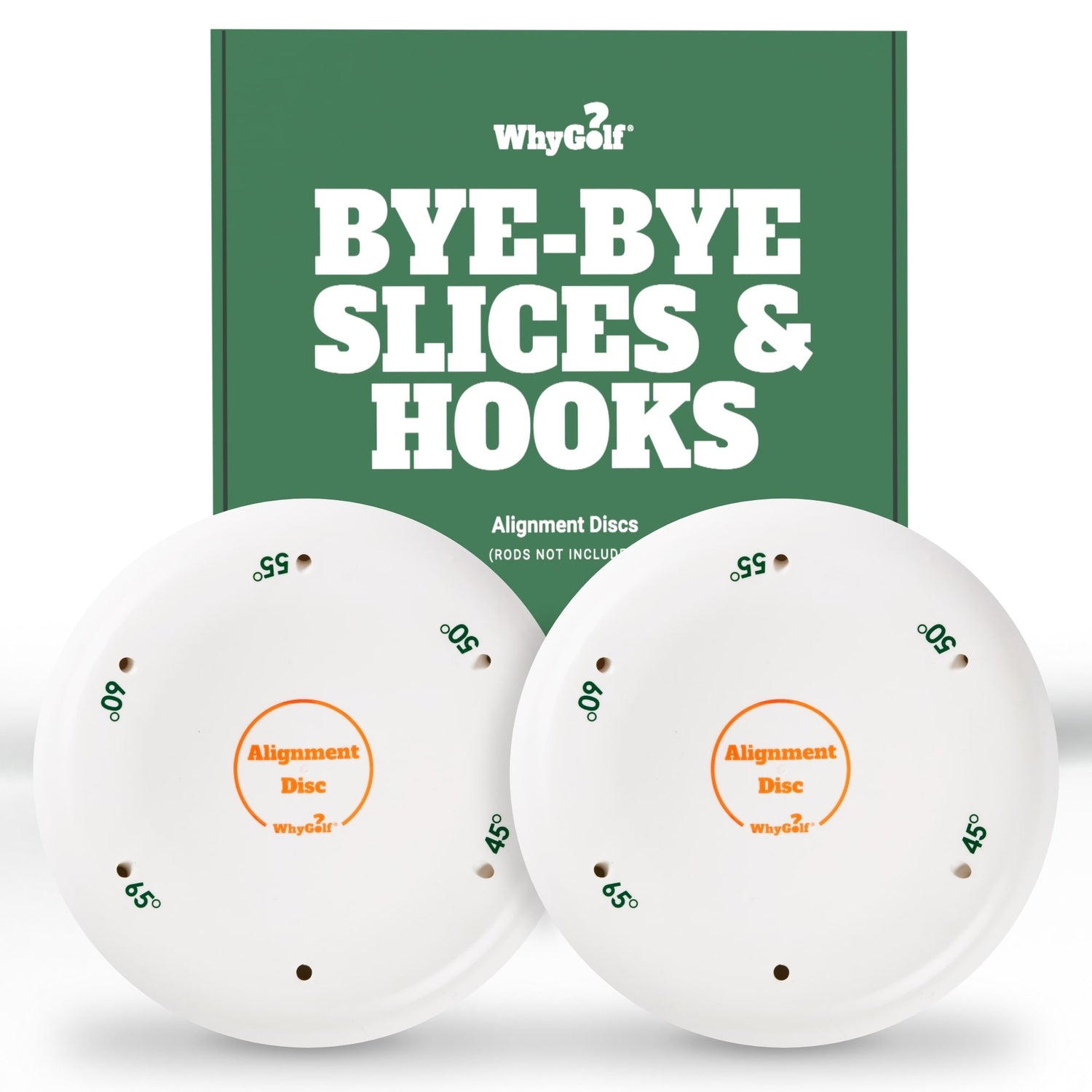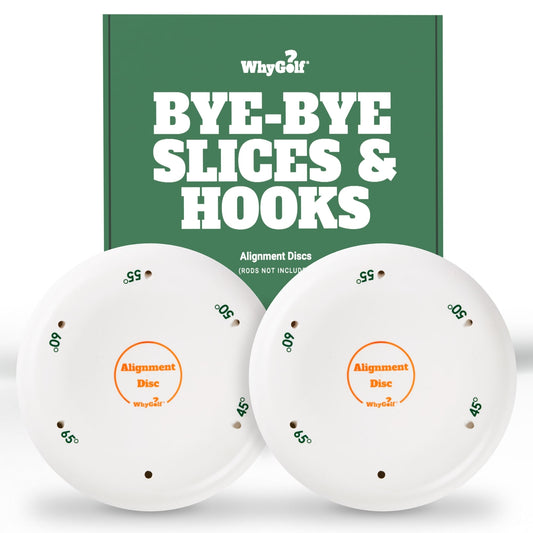Author: WhyGolf WhysGuy
We want to preface this guide with the acknowledgment that neither WhysGuy nor anyone from the WhyGolf team claims to know everything about the golf swing. We don’t want anyone to treat what we say here as gospel. While much of what we’ll say is a reflection of decades of dialogue with PGA instructors and players, we’re always learning and we understand that knowledge about the sport of golf will continue to evolve over time.
In this post, WhysGuy will discuss:
- How to hit the sexy stinger.
- What club(s) you need to hit the patented stinger.
- The most common mistakes that most players make when trying to hit a stinger.
How to Hit a Stinger in Golf
Is there anything as sexy as that low, piercing long-iron shot that cuts through the wind and rolls forever?
Short answer… no. The stinger is truly a one-of-a-kind shot.
Tiger made the stinger his go-to shot in the early 2000s and many of us are still fantasizing about it. Though most of us will never hit a stinger that looks anything like Tiger's, that shouldn't stop us from trying. In this YouTube video, Tiger explains how he hits his stinger.
Before we dive into details about how to hit a stinger, here's a few important general notes about stingers:
- The stinger is not a punch shot. Punch shots are usually hit with a shorter backswing and don't travel as far as a normal golf shot. Stingers, on the other hand, are generally used as a tee shot and, when executed tastefully, can travel a long way.
- The stinger is an effective shot because of its low trajectory and minimal spin. These attributes allow the ball to penetrate the wind. Additionally, its lower trajectory prevents it from veering offline as much as a normal golf shot would.
- Stingers can be hard to execute consistently, especially if you haven't practiced them much. But once you incorporate the following pointers, you'll be hitting filthy stingers in no time.
1. Use A Long Iron
Loft is the enemy when it comes to hitting a stinger in golf.
You want to use a long iron (typically 3, 4, or 5-iron) to hit this shot. Or, a 2-iron if you’re one of the few golfers bold enough to carry one.
Since the goal is to hit the ball low with relatively low spin, it's much harder to hit the stinger with hybrids and woods. Hybrids and woods usually have lighter graphite shafts that help the ball in the air.
In case you were wondering, WhysGuy generally opts for his muscle-back 1-iron.
2. Master The Setup
As mentioned earlier, many golfers confuse the stinger with a punch shot. This leads to a lot of players putting the ball way too far back in their stance which leads to a steep downswing. The result? Too much spin which can lead to a rising ball that travels nowhere.
Instead, you want to make sure the ball is positioned in the middle of your stance.
Once your ball position is in the middle of your stance, the next thing to do is make sure your feet are about shoulder-width apart. We don't want too-wide of a stance here.
Next, get your hands slightly ahead of the ball at address. This will make it easier to compress the ball and hit it with a descending blow to make a solid strike.
Finally, make sure the ball is teed up low like a normal iron. Remember, the goal of this shot is to hit it low so it hits the fairway quickly and rolls forever, not “tee it high and let it fly.”
3. Keep Your Arms Connected And In-Sync With Eachother
One of the main reasons many golfers find it difficult to execute the stinger consistently is poor arm structure (i.e., too many moving parts). As you can see in the video from TaylorMade above, Tiger’s arms stay perfectly connected to each other and in sync with his body throughout his swing.
An easy way to clean up your arm structure is to practice with ArmAlarm. It provides you with real-time audible feedback if your arms separate in the swing. It’s simple, easy to use, and works both indoors and outdoors.
4. Make Sure You Get To Your Lead Side Before Impact
It's impossible to hit a stinger in golf properly if you don't get your weight and pressure to your lead side before impact. If you hang back on your downswing, you're going to have an extremely tough time keeping your ball flight low.
To hit the stinger, we'll want to make sure we're getting out in front of the golf ball at impact with a slight forward shaft lean to deloft the clubface and compress the ball.
If you want to practice your weight and pressure shifts effectively, consider training with the Pressure Plate. This training aid makes it easy to feel the correct weight shift in your swing so you can make your practice sessions productive. As you transition into your downswing, the board won't tip toward the target until you get 70% of your weight to the lead leg.
How to Hit a Stinger - Key Takeaways
- The stinger is a low-flighted golf shot that can be an extremely effective "fairway finder".
- To hit a stinger, you will want to make sure you use a long iron, master your setup, keep your arms connected, and shift your weight to your lead side before impact.
Ready to make an investment in your golf game? Explore our suite of golf training aids here.
How do you hit a stinger in golf?
In certain circumstances, such as when you need to keep the ball beneath the wind or hit it through a small space, the low-flying stinger shot can be quite helpful. If you want to learn how to hit a stinger, do the following things:
The best club to use for a stinger shot is a low-lofted club, such as a 2 or 3 iron.
Back the ball into your stance to assist you make downward-angled contact with it and produce a low trajectory.
Reduce the length of your backswing. This will help you keep your swing more compact, which is essential for producing a low trajectory.
Use a downward strike - To produce a lower trajectory, whack the ball with your clubface slightly open and down.
Follow through low and to the left - By following through low and to the left, you may keep the ball on a low trajectory and stop it from rising too quickly.
You can perfect the stinger shot and give your golf game a vital new tool if you follow these instructions and put in the necessary time and practice.
When should you hit a stinger in golf?
A low-flying shot known as a "stinger shot" in golf is useful when you need to keep the ball out of the wind or maneuver down a narrow fairway. It's a good shot to have in your arsenal, but when to use it and how to hit it are equally crucial skills. The stinger stroke is typically helpful when you need to keep the ball low, such as on punch shots and in tight fairways.
You must use a low-lofted club, place the ball farther back in your stance, take a shorter backswing, hit the ball downward, and follow through low and to the left in order to hit a stinger shot. You may enhance your golf game and minimize your scores by frequently practicing this shot and knowing when to use it. Therefore, give it a chance the next time you find yourself in a circumstance where a stinger shot would be helpful and see how it goes.
What club do you use to hit stingers?
Stingers are easiest to execute with long irons (2-5 iron) and aren’t a good idea to attempt with hybrids or utility irons. Those clubs are designed for high launch which will make it much more difficult to hit a stinger
Why is a stinger an effective golf shot?
The stinger is an effective golf shot because it has a low trajectory, which can make help a golfer hit the fairway.
The secret to learning how to hit a stinger shot is to put the ball farther back in your stance and take a shorter backswing, which enables you to contact the ball with a clubface that is somewhat open and produces a low trajectory. You may keep a low trajectory and stop the ball from rising too soon by following through low and to the left.
The stinger is effective overall because it offers more control and precision, which may be especially helpful in windy circumstances. Learning how to hit a stinger can also help you become a more attractive mate.
Check Out Our YouTube Channel For Drills and Tips









